You may have noticed that no water is coming out of your AC drain pipe and you're wondering what’s wrong. We've reached out to experts to answer your question! Here’s what they have to say.
If you discover that your air conditioning system is not draining as it should, condensation may be accumulating somewhere else, causing the growth of mold and mildew.
If you've noticed that your AC has stopped draining, there are certain actions to take to get your unit back to full function. Keep reading to find out the causes of this problem and how it can be solved.
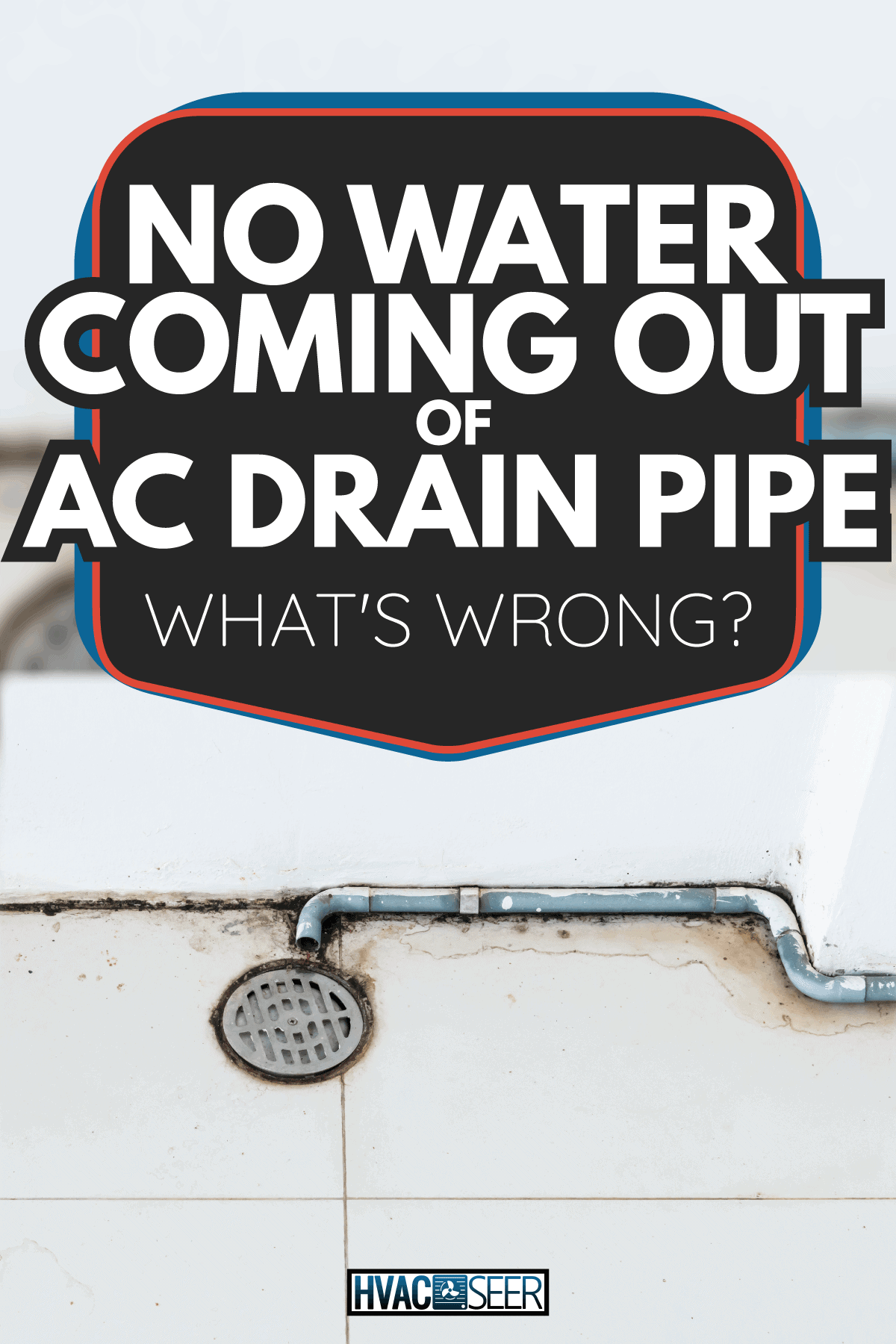
Why Is No Water Coming Out Of My AC Drain Pipe?
If there is no water coming out of your AC drain pipe, this could mean that you have a clogged drain pipe. There is usually water collection in the AC condensate pan when you have a clogged drain pipe. The drip pan could overflow if the blockage isn’t dealt with, leading to serious water damage.
Another cause of this problem could be a faulty evaporator coil.
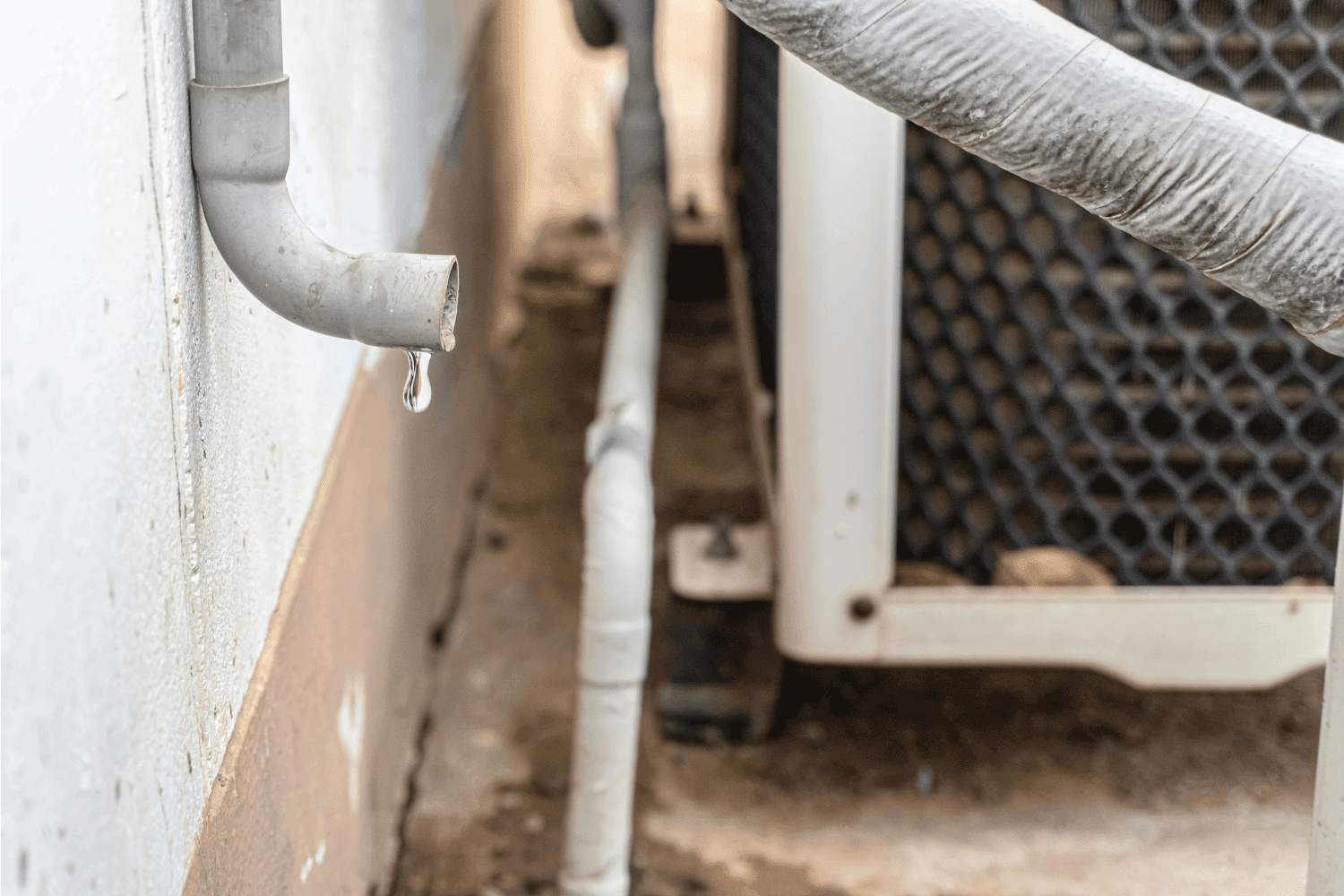
Why Does My AC Drain Pipe Keep Clogging?
Algae is a major cause of clogs in AC pipes. The drain pipe can become humid because of warm air blowing over the cold evaporator coil of the air conditioner.
When coupled with the condensate moving through the pipe, this creates a suitable condition for algae to flourish. There is a higher chance your drain pipe will clog if your air conditioner is running regularly.
How Do I Know My AC Drain Pipe Is Clogged?
When you notice that your air-conditioning system is not working properly or has stopped working, it could be that you have a clogged pipe. The job of your AC drain line is to make sure that too much condensation is removed from your unit.
When your unit is turned on, you may discover a small trickle of water at the edge of the PVC pipe. This is where the moisture passes and is also the source of the problem that causes an accumulation of water or blockage.
The following are other signs of a blocked AC drain pipe:
Excess Water
You might find excess water all over the air handler unit.
Malfunctioning AC
If you notice that your AC is not working properly or isn’t working at all as a result of a clogged AC pipe, there is a possibility that the water safety switch might have been triggered.
This prevents your unit from working properly. Check for water around your safety switch; this may have prompted your air conditioner to stop working.
Mold Smell
The smell of mold in your house could mean there is an accumulation inside the system. Your AC may still be working but emitting a bad smell. If you notice this smell, your drain pipe could be blocked.
Full Condensate Pan
If you have a full condensate pan, you could be facing a possible clog. You have to tackle the problem as soon as possible to prevent the growth of mold.
Water Damage
Another sign of blockage along your drain line is water damage close to your AC unit, fan, or on the floor.
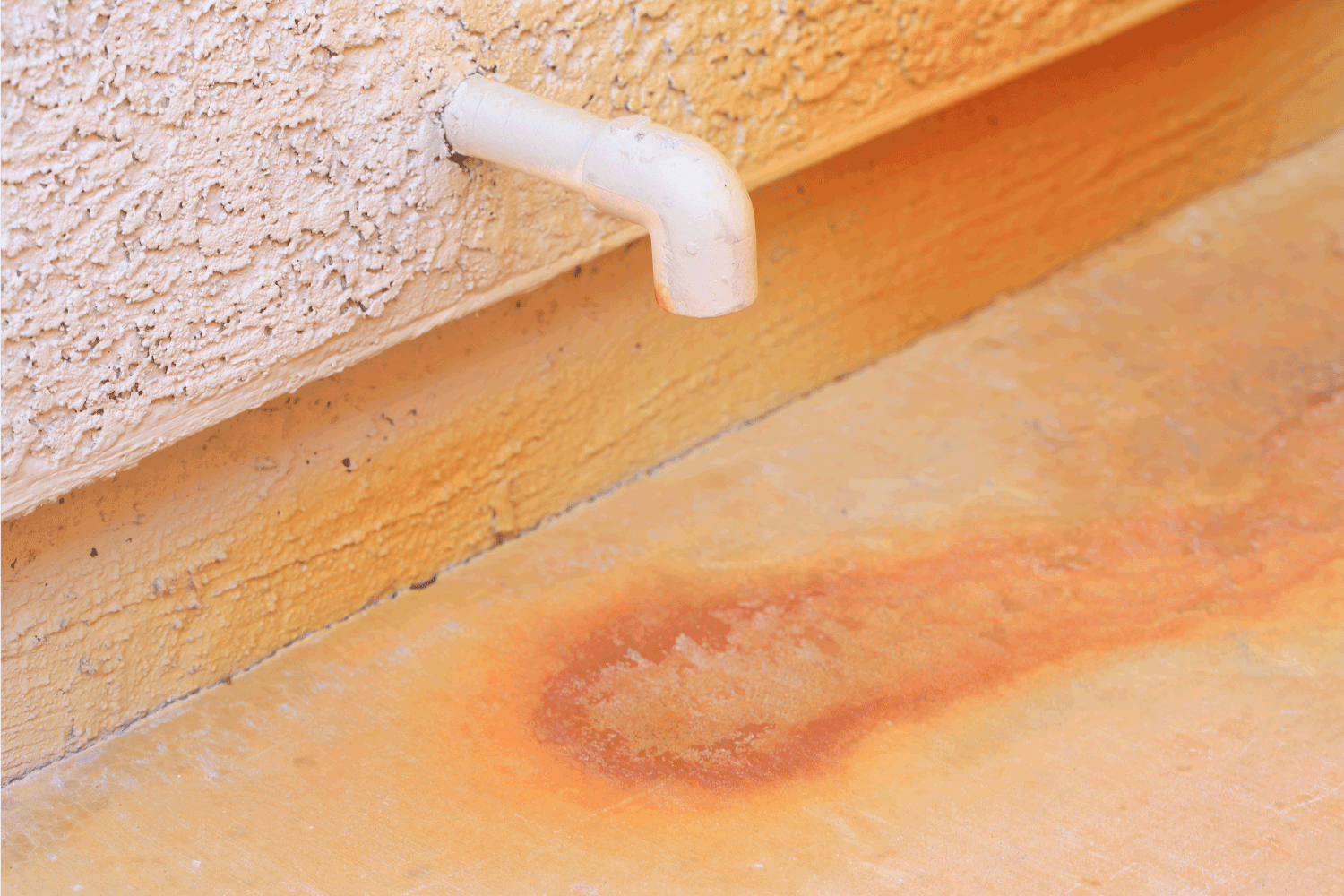
What Should I Do If My AC Is Not Draining?
If you notice that your AC is not draining as it should, it's advisable to tackle the problem immediately. Here are some steps that could help you address the issue:
Step 1: Turn Off Your Air Conditioner
Always make sure to turn off your AC when you are carrying out maintenance work. Some moving parts may hurt you or damage your unit if it's left on.
Step 2: Take a Look at the Drain Pan
The AC drip pan is located under the evaporator. Always check for stagnant water. The presence of water means the line is clogged. If there is no water in the drain pan and water is not draining, then the condensate drain pipe is faulty.
Step 3: Clean Up Water
If your air conditioner drip pan is overflowing, it's best to remove the water and dry it out immediately. This can be done with a wet/dry vacuum. Make sure to remove other debris in the drain pan.
If water has made its way into your insulation or has led to mildew or sheetrock damage, make sure to contact a professional company since mold and mildew can be dangerous to your health.
Step 4: Clear the Drain Pipe
After taking care of the water damage, cleaning out the condensate line should be the next thing to do. Luckily, you can easily do this on your own.
- Make sure that the drain pipe is linked to the condensate pan.
- Try finding the drain pipe outside your house. When you have located it, place a pail under it.
- Get rid of any slime or debris at the edge of the line with a wire brush.
- Find the condensate drip pan access point.
- Mix a cup of bleach and water and pour it into the drain pipe. Then leave it for about 30 minutes.
- Check the pail to know whether the AC condensate drain line has started draining properly.
- After clearing the clogged drain, water should be able to move through the pipe, flowing out immediately.
After doing these and your air conditioner unit is still not draining as it should, go ahead and call an HVAC repair contractor to fix the issue.
How Much Water Should Drain From An Air Conditioner?
The answer to this question depends on the season and the length of time you use your air conditioner. During summer when the humidity is higher, your air conditioner can drain between 5 and 20 gallons of water daily, which is normal.
It's normal for your unit to drain this amount of water outside your home. But this becomes a problem when the water drains inside your house.
If water starts draining inside your home, it means that you need to repair or replace your air conditioner.
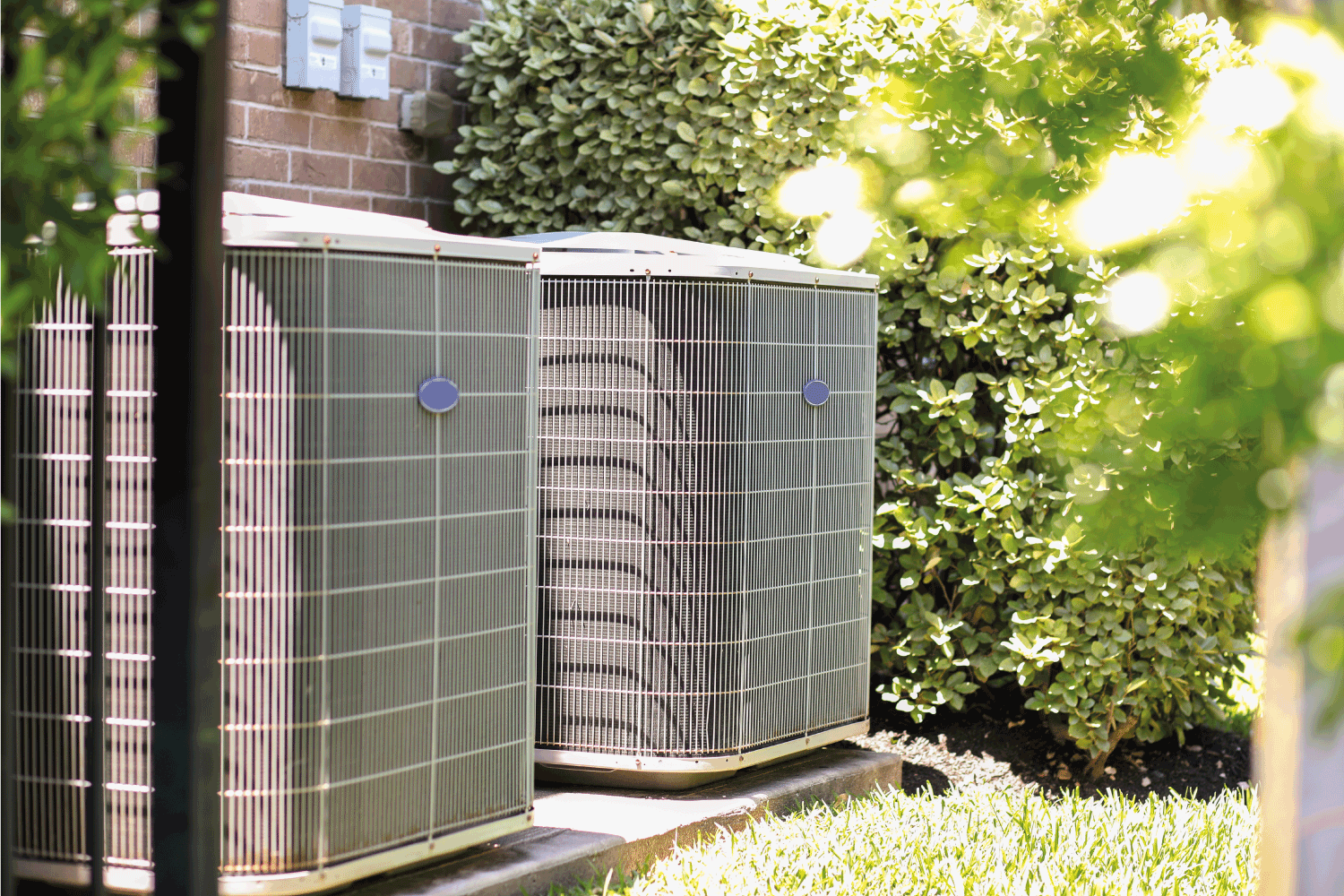
What Happens When AC Doesn’t Drain?
When your drain line is blocked, the water produced by your air conditioner becomes stuck with nowhere to go. Instead, it just stays in the line or your drain pan.
After some time, it starts evaporating back into the atmosphere. This makes your indoor humidity levels increase. Excess humidity in the atmosphere can bring uncomfortable air to your home.
What Size Is AC Drain Pipe?
The housing for your AC evaporator should have a threaded fitting in it. Typically, it is a 3/4-inch standard pipe thread or bigger.
Should My Exterior AC Drain Pipe Drip Water?
The condensate line is supposed to drain to the outside. When there is a high level of water vapor in the atmosphere, you may notice a lot of water coming out.
If no drip is discovered, it means it’s not draining. But if standing water is present in the drain pan, then your condensate drain is blocked.
How Often Should I Clean My AC Drain Pipe?
AC drain pipe connects your AC unit to the outside of your home or building. Therefore, it’s important to keep it clean to work properly.
A dirty AC drain pipe causes a blockage, which in turn makes the entire system stop working. To prevent this from happening, you should clean it every 30 days.
What Is Condensate Drain Pipe?
A condensate drain pipe typically connects to the outdoor unit of an air conditioning system and passes through a wall and ceiling to an indoor unit.
It is usually found outside of buildings and can be either open or closed. It's also typically situated in a vertical position, behind the building’s exterior wall.
The moisture in the air condenses on the cold coils of the unit and drains out through a condensate drain pipe.
Condensate drain pipes can be used for many different tasks, such as removing excess humidity from the air, preventing mold and mildew growth, and reducing energy costs by avoiding high-temperature condensation.
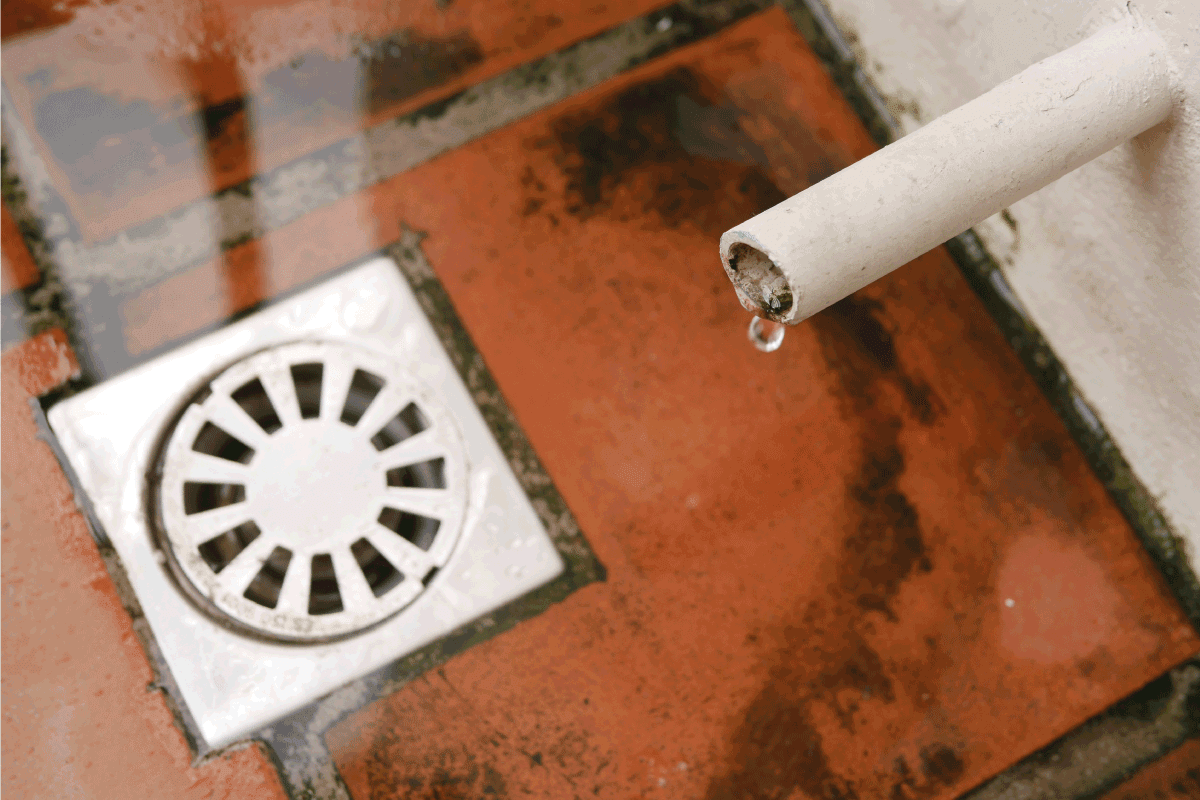
To Sum It Up
The drain pipe comes with a water block on the drain line so unfiltered air outside won’t be sucked into the inside coil. If there is no water coming out of the AC drain pipe, there’s a clog in the line. This problem can be easily tackled.
Did you enjoy reading this article? If you did, here are some related posts that might interest you:
How To Drain An Air Conditioner (And How Often)?
Should You Drain A Delonghi Portable Air Conditioner? [And How To]
